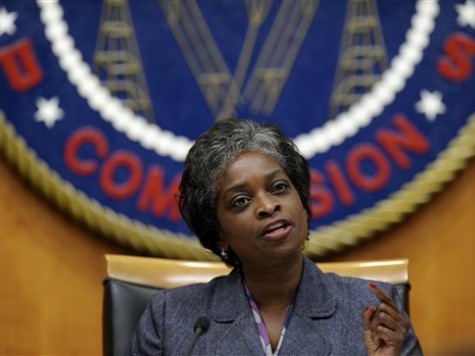
In 2012, the FCC contracted with the left-leaning Annenberg School of Communication and Journalism to study “entry barriers” to the media and see whether or not minority groups had enough access to the media. This year the FCC is launching a wide-ranging study that will require news agencies to inform the government on what stories they cover.
What may follow that is a push for a new “fairness doctrine” as the FCC makes recommendations intended to force the media to air stories which the government wants reported.
The 2012 study was carried out by University of Southern California’s Annenberg School of Communication and Journalism–a school operated by the same group that employed a pre-President Barack Obama and domestic terrorist William Ayers in Chicago in the late 1990s and early 2000s.
The study, as part of the Federal Communication Commission’s 2012 Report to Congress about the barriers to participation in the communications industry (also known as the Section 257 Report), was intended to “identify market entry barriers and whether such barriers impact the public’s critical information needs.” A second goal was to help the FCC make “proposals to eliminate statutory barriers to market entry by those entities, consistent with the public interest, convenience and necessity.” The FCC intended to begin the process of laying down in the regulations definitions of what constitutes “critical information” and what doesn’t.
In 2013, the second leg of that project was announced as a “Multi-Market Study of Critical Information Needs.”
A study, titled “Research Design for the Multi-Market Study of Critical Information Needs,” was released in April. The study was produced by a company called Social Solutions International, Inc.. SSI has been awarded hundreds of thousands of taxpayer dollars in federal contracts.
One of the goals of this new project is to conduct a “media census” on just what is being broadcast in the electronic media and published in magazines, newspapers, and on the Internet.
“Researchers will analyze the content of broadcasts, newspaper articles, and website postings to determine the extent to which eight defined ‘Critical Information Needs’ (CINs) are being covered,” reported Eve Reed.
In a May 24 announcement of the project, Acting FCC Chairwoman Mignon Clyburn said that the FCC has a “duty” to find out what news is being broadcast.
The FCC has a duty to make sure that the industries it regulates serve the needs of the American public no matter where they live or what financial resources they have. The research design we announce today is an important next step in understanding what those needs are, how Americans obtain the information critical to their daily lives in a dynamic technological environment, and what barriers exist in our media ecologies to providing and accessing this information.
The FCC also issued the following comment: “The commission needs to conduct or commission research that illuminates the diversity of views available to local communities, the diversity of sources in local markets and the diversity of critical information needs of the American public, including women and minorities.”
Some of the eight CINs are telling as to what sort of criteria the FCC is using to quantify what is supposed to be useful information for a community. Two of the categories being assessed are whether or not a media outlet is properly informing customers about “the environment” and what “economic opportunity” news is reported–the latter as opposed to plain economics or news on the economy.
To determine if the media is fulfilling these CINs, media outlets will be required to fill out a very long survey to report to the government about what stories they are airing or publishing in the several categories being assessed.
Among other criteria, the study will ascertain: what “news philosophy” is pursued by the media outlet (i.e. it’s ideological direction); how the media outlet defines “critical information”; see if the media includes “community input” into its stories; and review the “decision making process” to find out how the media outlet determines what stories to cover.
Critics of this study, however, worry that with this government-enforced, intrusive survey into what stories the media is covering and how they are covering them, some freedoms will be lost.
Chuck Sweeny, for instance, wrapped up his recent report on the FCC’s study saying, “When ‘Big Brother is watching’ over reporters’ and editors’ shoulders, freedom of the press will be gone, and our liberty with it.”
For her part, Eve Reed also raised concerns. “But the questions that the researchers will be asking suggest a renewed interest on the part of the FCC in the inner workings of station and newspaper editorial decision-making, which may itself raise concerns,” she said.
All this raises worries that the FCC is looking for a backdoor way of re-instituting the Fairness Doctrine–the repeal of which gave us radio programs like the Rush Limbaugh show and paved the way for Fox News–in a new effort to control what goes on the air and who can own what media.

COMMENTS
Please let us know if you're having issues with commenting.